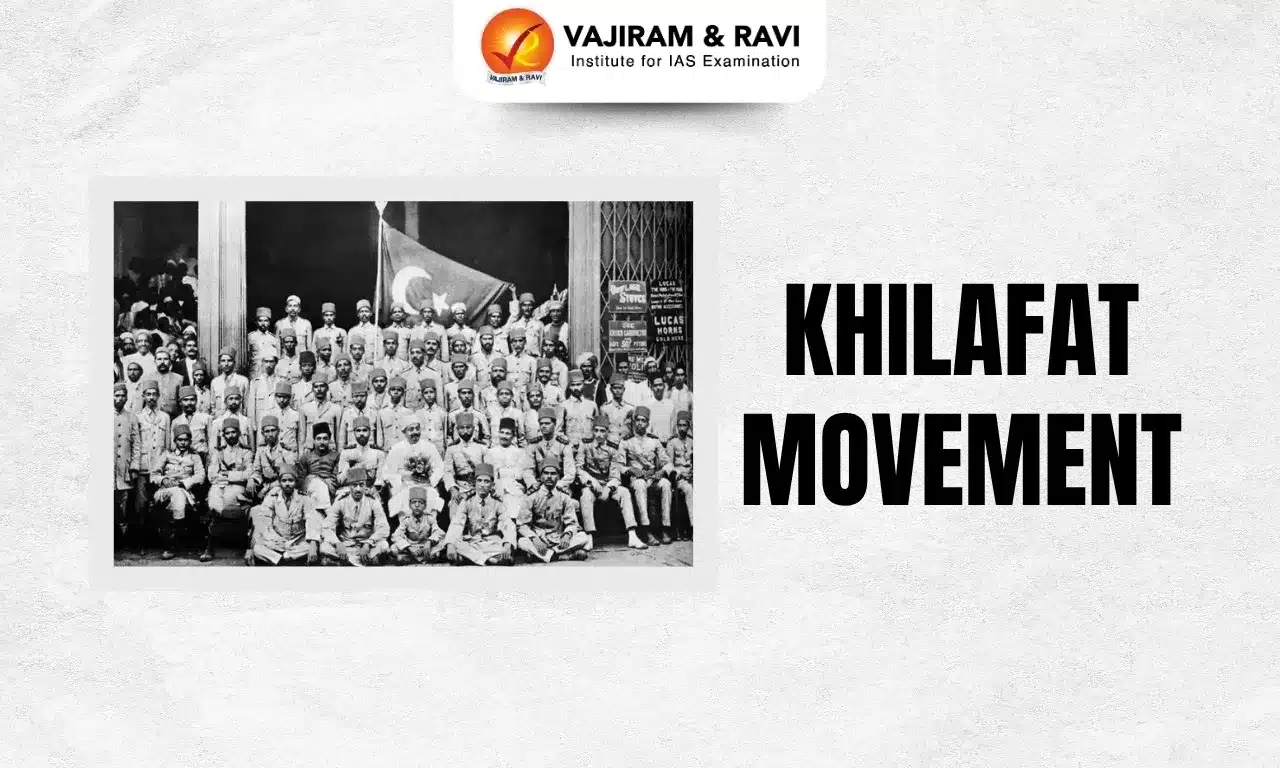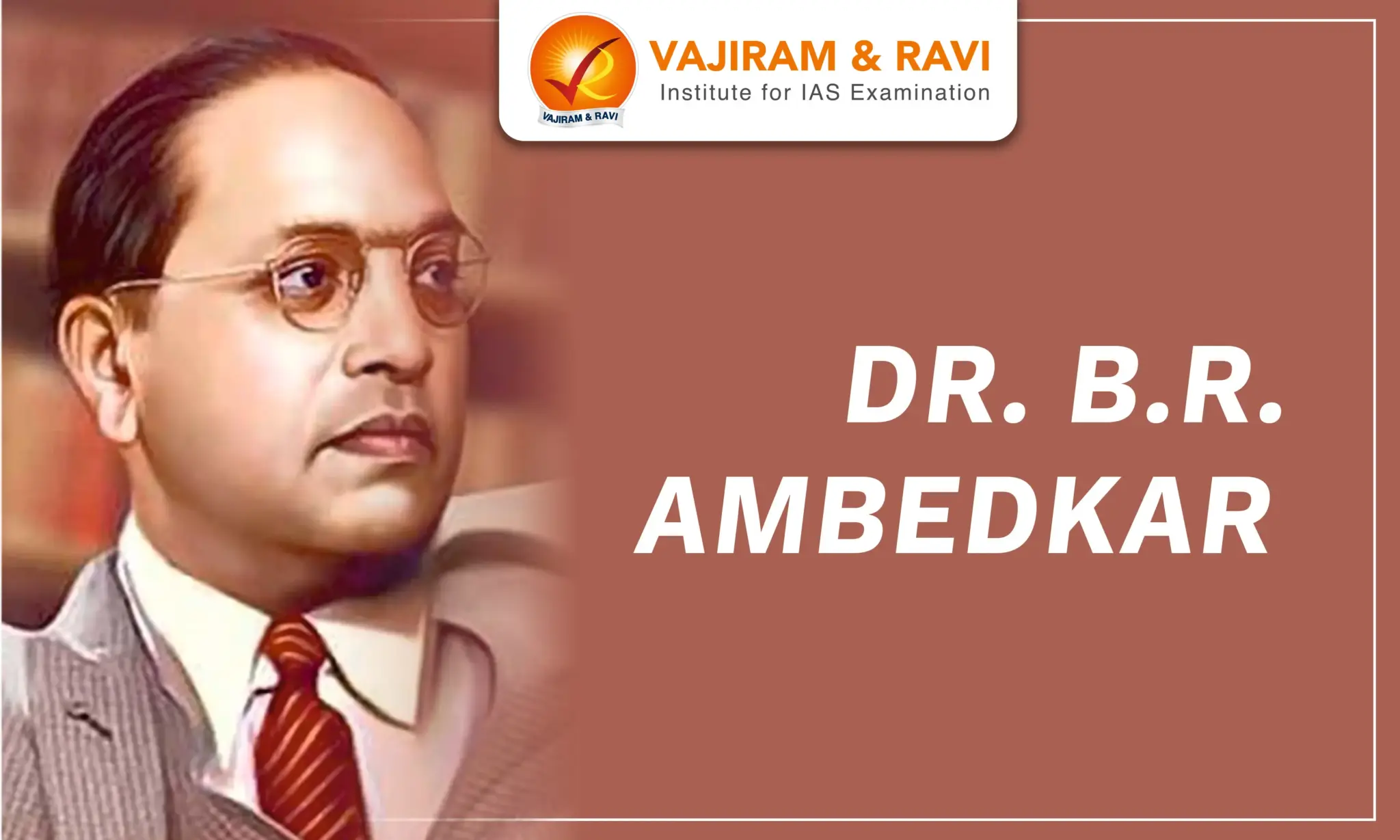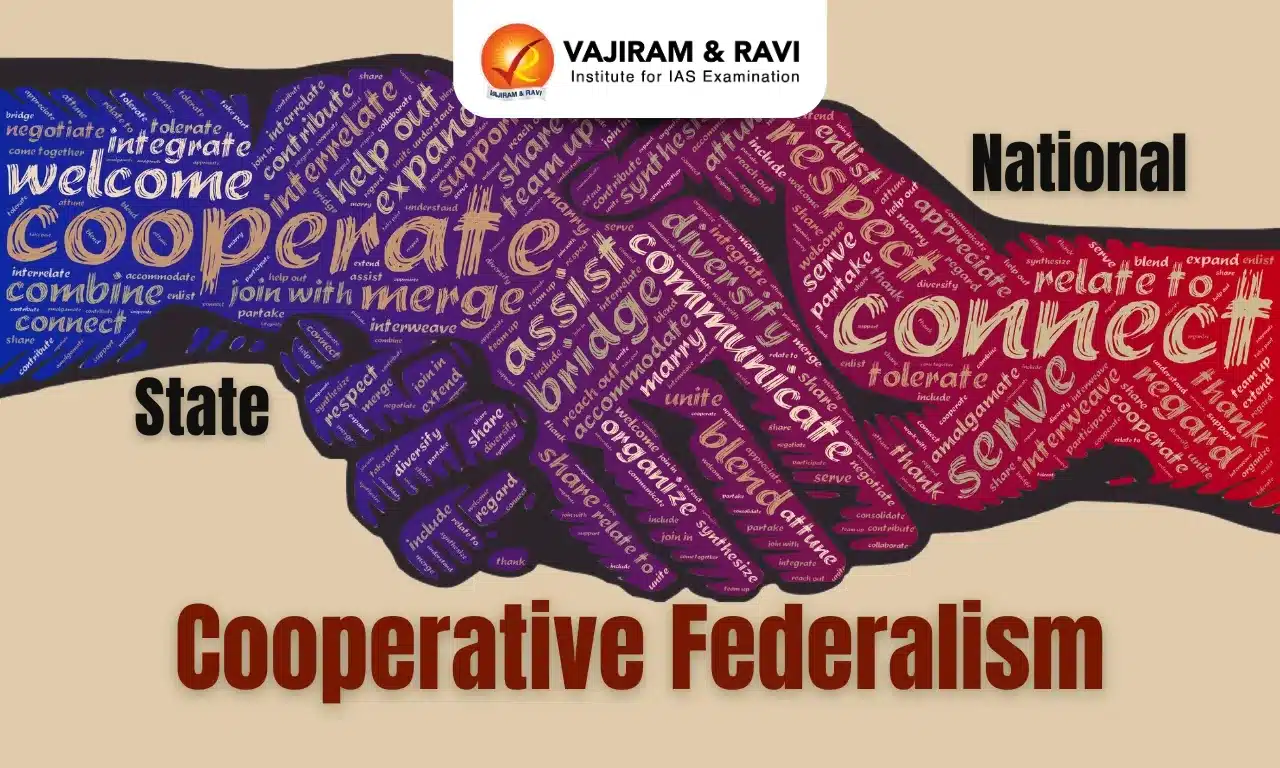Khilafat Movement: During the post-World War I period, there was growing resentment among Indians due to the Jallianwala Bagh massacre, the Rowlatt Act and the treatment given out by the British Empire to the Turkish Khalifa. These developments created the ground for a more broad-based mass movement against British rule.
In this backdrop, the Khilafat issue proved to be an opportunity for Gandhi to bring Hindus and Muslims together in fighting against the colossal colonial empire. The Khilafat Movement, together with the Non-cooperation Movement, marked the beginning of a new phase of the Indian national movement under the leadership of Mahatma Gandhi.
Khilafat Movement Background
The Khilafat Movement was launched against the backdrop of the socio-economic impacts of the First World War, the draconian Rowlatt Act, the Jallianwala Bagh Massacre, and the Montagu-Chelmsford Reforms.
- Impacts of the First World War: Post World War I, Indian commodity prices increased, affecting common people and industries.
- An increase in import volumes led to a decline in production and factory closures. This led to a rise in inflation.
- Peasants faced increased rents and taxes, causing alarm in the country's economic situation.
- Nationalists, disillusioned by the British failure to deliver goods and services at appropriate prices, found their anti-British attitude strengthened.
- Rowlatt Act: Fearing the potential revolutionary activities, the British came up with the Rowlatt Act of 1919, which allowed the government to imprison people even without trial.
This led to a significant political awakening and anger in India, with Gandhi opposing it through the Rowlatt Satyagraha, resulting in hartals and demonstrations.
- Jallianwala Bagh massacre: During the protests of Indians against the arrest of Satyapal Singh and Saifuddin Kitchlew, Amritsar witnessed the naked brutality of Imperial power when General Dyer ordered his troops to fire upon the unarmed crowd gathered at Jallianwala Bagh on April 13, 1919.
- Despite the fact that thousands were killed, the Hunter Commission gave General Dyer almost a clean chit, which angered Indian nationalists.
- Mont-Ford Reforms: To placate the Indian nationalists, especially Congress, the Government of India Act of 1919 was brought to the public.
- But it further disillusioned nationalists, causing a potential popular uprising against the British Government.
Khilafat Movement 1919 Reasons
In the years following the First World War, Indian Muslims were supportive of Indian nationalism. The primary reason for the Khilafat Movement was to exert pressure on the British government to keep the Ottoman Sultan in power as the Caliph of Islam after the Ottoman Empire collapsed at the end of the war.
- Treaty of Sevres (1920): Turkey was defeated in the First World War, and Muslims around the world felt the harsh terms of the Treaty of Sevres (1920) as a great insult to them.
- Following the war, the British dismissed the Turkish Khalifa. As a result, Muslims in India started the Khilafat movement to reestablish the Khalifa's position.
- Their main demands were:
- Khalifa's rule over Muslim holy sites must be maintained.
- The Khalifa should be left with enough territories after the war when it comes to territorial adjustments.
- Anti-imperialism: It also embodied a broader anti-imperialist sentiment. Many Muslims and Hindus in India were disillusioned with British colonial rule and sought to express their discontent by aligning with the cause of the Ottoman Empire.
Course of the Khilafat Movement
In order to put pressure on the British government, to address the injustices of the Punjab wrongs and to defend Khalifa’s temporal powers, the Khilafat movement was established in 1919 under the leadership of Mohammad Ali and Shaukat Ali (commonly referred to as the Ali brothers), Abul Kalam Azad, Hasrat Mohani, and others.
- Khilafat Committee: A Khilafat Committee was established in Bombay at the start of 1919. Muslim businessmen took the lead, but their efforts were limited to Khalifa-supporting meetings, petitions, and delegations.
- However, a militant trend within the movement soon started to emerge. A moderate approach did not satisfy the militant trend's leaders. Instead, they advocated for the start of a national movement.
- Delhi Khilafat Conference: The conference presided over by Gandhi advocated, for the first time, at the All India Khilafat Conference in Delhi (22-23 November 1919) non-cooperation with the British Government in India.
- Hasrat Mohani called for a boycott of British goods during this conference.
- Non-cooperation with the Government: The Khilafat leadership made it very clear that they would cease all cooperation with the government if the terms of the post-war peace were unfavourable to Muslims.
- Shaukat Ali alerted the British in April 1920 that if they didn't succeed in appeasing the Indian Muslims, "we would start a joint Hindu-Muslim movement of non-cooperation."
- In addition, Shaukat Ali placed emphasis on the fact that Mahatma Gandhi, who is respected by both Muslims and Hindus, would serve as the movement's leader.
- Gandhi and the issue of Hindu-Muslim unity: The Khilafat issue was not directly linked with politics in India, but the Khilafat leaders were eager to enlist the support of Hindus.
- Gandhi saw this as a chance to unite Hindus and Muslims in opposition to the British.
- Until May 1920, Gandhi adopted a moderate stance despite his support for the Khilafat issue and his role as the head of the All India Khilafat Committee.
- However, the publication of the terms of the “Treaty of Sevres” and the Publication of the “Hunter Committee Report” on the 'Jallianwala Bagh Massacre' in May 1920 made Indians angry and led Gandhi to openly take the Khilafat issue.
- Programme of non-cooperation: From June 1–3, 1920, the Central Khilafat Committee met in Allahabad. Several leaders from the Congress and Khilafat were present at the meeting. A programme of non-cooperation with the government was announced at this meeting. This was to include:
- boycott of titles conferred by the Government,
- boycott of civil services, army and police, that is, all government jobs
- non-payment of taxes to the Government.
- Support from Congress:
- Despite Gandhi’s support on the Khilafat issue, the Congress was divided initially.
- Later, Congress felt that it was an excellent chance to unite Muslims and Hindus and strengthen Muslim involvement in further national movements.
- In turn, the Muslim League decided to fully support the Congress and its political agitation in full potential.
- Merger with Non-cooperation Movement: The Khilafat Movement eventually merged with Gandhi's Non-Cooperation Movement.
Khilafat Movement Significance
Though the Khilafat Movement was merged and subsumed under the larger movement, the Non-cooperation Movement and the issue of Khilafat itself were diluted due to the political reforms of Mustafa Kamal Pasha in Turkey. It still holds importance on a number of fronts.
- Urban Muslims were attracted to the Indian national movement.
- Hindu-Muslim unity was strengthened, and this was reflected in the extent of participation in the Non-cooperation Movement.
- Nationalist sentiments politicised every segment of the population, including women, traders, urban poor, students, peasants, artisans, and peasants.
- Congress, especially Gandhi, attracted many liberal Muslim leaders to the secular nature of the Indian freedom movement.
Last updated on November, 2025
→ Check out the latest UPSC Syllabus 2026 here.
→ Join Vajiram & Ravi’s Interview Guidance Programme for expert help to crack your final UPSC stage.
→ UPSC Mains Result 2025 is now out.
→ UPSC Notification 2026 is scheduled to be released on January 14, 2026.
→ UPSC Calendar 2026 is released on 15th May, 2025.
→ The UPSC Vacancy 2025 were released 1129, out of which 979 were for UPSC CSE and remaining 150 are for UPSC IFoS.
→ UPSC Prelims 2026 will be conducted on 24th May, 2026 & UPSC Mains 2026 will be conducted on 21st August 2026.
→ The UPSC Selection Process is of 3 stages-Prelims, Mains and Interview.
→ UPSC Result 2024 is released with latest UPSC Marksheet 2024. Check Now!
→ UPSC Prelims Result 2025 is out now for the CSE held on 25 May 2025.
→ UPSC Toppers List 2024 is released now. Shakti Dubey is UPSC AIR 1 2024 Topper.
→ UPSC Prelims Question Paper 2025 and Unofficial Prelims Answer Key 2025 are available now.
→ UPSC Mains Question Paper 2025 is out for Essay, GS 1, 2, 3 & GS 4.
→ UPSC Mains Indian Language Question Paper 2025 is now out.
→ UPSC Mains Optional Question Paper 2025 is now out.
→ Also check Best IAS Coaching in Delhi
Khilafat Movement FAQs
Q1. What was the Khilafat Movement?+
Q2. Which nationalist leader was at the forefront of the Khilafat Movement in India?+
Q3. Who founded the Khilafat Movement?+
Q4. Why was the Khilafat Movement founded?+
Q5. What was the significance of the Khilafat Movement?+
Tags: khilafat movement quest

















